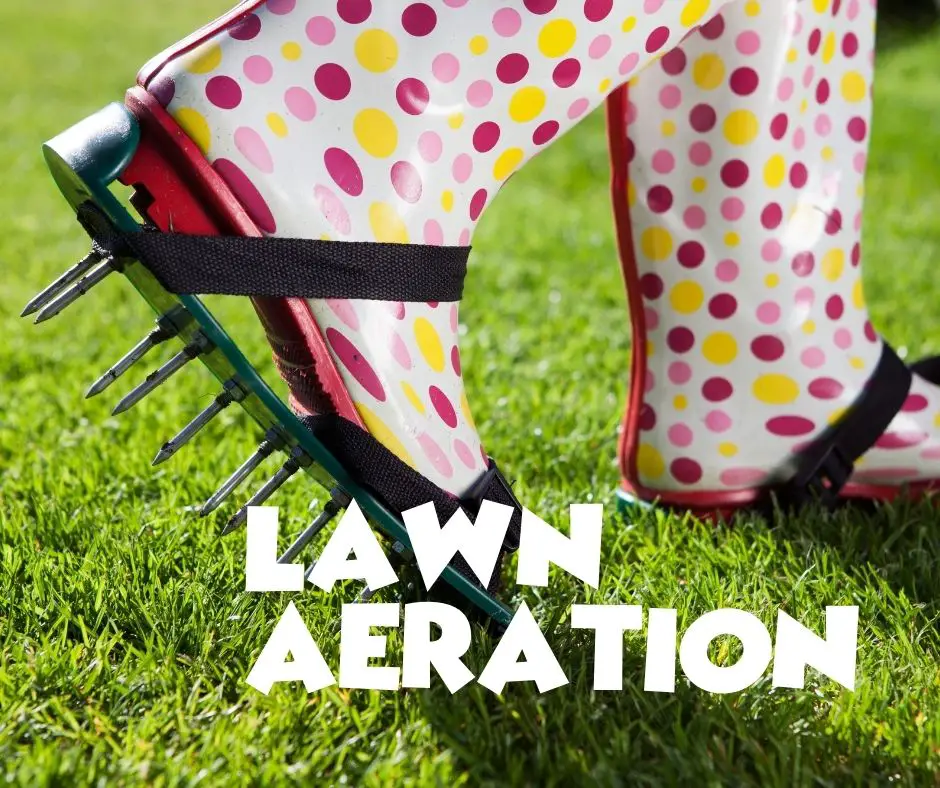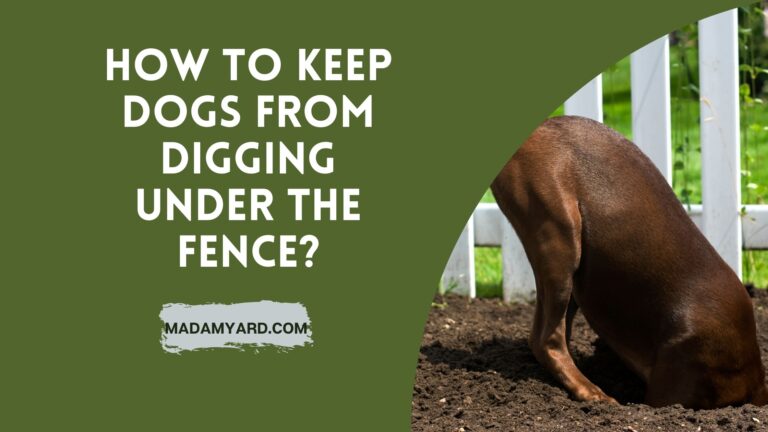How To Soften Hard Soil Lawn?
As far as I know, this is a problem that most homeowners and gardeners have encountered. A kind of soil that is dense, thick, and hard. To make matters worse, it may cause all sorts of problems for the grass in your yard or lawn. Would you mind to keep reading to learn more about how to soften hard soil lawn?
The soil in your grass should naturally absorb water to the depth of six inches or more. The problem is that in hard and compact soil, water prefers to flow off via your drainage line and create a puddle instead. This will lead to thirsty and weak grass and sloppy lawns that are difficult to maintain.
A soil rich in organic compounds, air, and water is what most people are looking for in the long run. For the lawn grass to thrive, you’ll need soil with the following properties.
So, how to soften hard soil lawn? Before we get to the bottom of this, let’s look at how soil compaction occurs.
Why Your Lawn’s Soil Is Hard?
Soil compaction is caused by heavy gardening equipment, foot movement, and heavy rains. Clay and loam soils are the most vulnerable. Furthermore, even sandy soils may get hardened by heavy machinery if they are squeezed for long enough.
The soil hardens as a consequence of excessive weight and moisture, closing the pores between soil particles. After a rainstorm, clay soils may take a long time to drain and then harden & crack when the weather is hot and dry.
To prevent compacting the soil, avoid stepping on the growth regions by laying out walkways. Excessive soil digging and mixing sand with clay soil may lead to the formation of concrete-like material.
Hard Soil Types
The amount, frequency, and severity of grass hardening are all dependent on the kind of soil underneath it. There will be an increased hardening of clay-based soil and other bad soil types with the lawn suffering.
Adding gypsum, lawn coring, and wetting agents and applying them regularly would be the initial remedy for these soil types.
Removing the substandard soil where the grass is to be placed and replacing it with quality lawns is a longer-term but more costly alternative. For years to come, thriving lawns will be the outcome of this long-term soil support system.
How to Soften Hard Soil Lawn?
It’s common for newly tilled soil to become compacted or hard if you walk on it while it’s still wet. While most soils may harden underweight, clay soil is especially prone to hardening due to its limited drainage and small particles.
So, how to soften hard soil lawn? Physical soil alteration and the use of soils additives to improve water drainage and air circulation are necessary to solve this problem.
Preventing an issue before it arises is typically the best course of action. Don’t walk on freshly tilled soil, and prevent foot and mechanical activity as much as possible on your lawn.
1. The Lawn’s Aeration
When you walk on your lawn, the earth compacts, preventing oxygen and water from penetrating it. It’s no surprise that hard soil lawns are generally unhealthy because of the importance of these two factors. Those nutrients might return to your soil if you disturb it just enough.
This may be completed with hand tools if you have a small yard. Even sandals with spikes on the bottom may be used to aerate your grass. Fork the ground every several inches with such a metal lawn fork to let air get in. For the first time, travel one way.

With a big yard, coring is a viable choice. An excavator punches holes in the earth and then removes the resulting soil. Use this procedure in the fall and spring for best results.
You should fertilize your grass once the coring is done. Additional processes may be required depending on the kind of soil. Taking extra precautions for clay-based soils, for example, may assist avoid future compacting.
This may be an option for those looking to get rid of the dead vegetation on their lawns. Expertise is required here.
They will add a lot of sand and Gypsum Clay Breaker to your yard. The soil will change dramatically as the rotary ho tills it. As a consequence, maintaining healthy grass will be much simpler.
2. Use Earthworms To Repair Lawns With Compacted Soil
Using earthworms to soften the lawn soil is a great natural alternative to chemical methods. Your lawn’s soil will be aerated and fertilized by the feces and tunnels left behind by earthworms.
3. Compost made from organic matter
Organic substances like compost manure and peat moss may be utilized on smaller lawns. You may also soften and loosen hard grass soil by using gypsum.
4. Using a Roto-Tiller To Deeply Till Your Lawn
If aeration doesn’t help, you may need to dig a bit further. An industrial rototiller can loosen the dirt to a depth of around afoot.
The problem with this procedure is that it can’t soften even the toughest soil. You’ll have to re-seed the grass since it turns the soil entirely over.
5. To avoid compact soil
The easiest way to protect your soil from becoming hard is to avoid compacting it. You’ll need to figure out what caused your soil to be in such a bad state.
In regions that are often walked on, the earth tends to get compacted. Areas surrounding a children’s play set are particularly vulnerable.
You have an option to make in this case. In the interests of preserving the remainder of your lawn, you may choose to let pedestrians and children’s play in certain places. If you don’t have time to remediate the compacted dirt, you might attempt to reroute traffic.
Another approach to compress soil is to overwork it. Before planting anything, you should wait only till your soil once.
As a result, the dirt does not settle into small clumps that allow air pockets. To avoid compact soil, avoid over-tilling your grass and garden. Aerating your soil with earthworms is a wonderful benefit of these items.
Look at the lawnmower if you’re worried about it being too harsh and compact. You may want to consider purchasing a model with wider wheels that will put less strain on your soil.
Compaction might occur if you let other cars on your grass. If you have a low-quality lawn mower, you don’t have to spend a fortune on a replacement.
A good quality mower can be had for less than $500. Those with smaller yards available are even more affordable choices.
Because clay-based soil is sensitive to hardening, your grass will still be susceptible to this problem. Replacement of your lawn’s soil with a superior kind would be a costly but beneficial remedy. The replacement of the hard soil to the depth of 4-8 inches is required.
The Best Way To Grow Grass In A Soil Like Hard Clay
When it concerns growing grass, clay soil may be tough. Everything to do with planting until watering the lawn is more difficult in this soil than in other types of soils, for example.
As long as you follow the instructions outlined below, you should be able to cultivate grass that can withstand harsh weather conditions year-round.
Step 1: A simple way to determine whether or not your soil has clay loam characteristics is to create a tiny ball of it, add water, and then press it. If the ball breaks at 1 and 2 inches, you possess clay loam. Clay is harder if it forms a ribbon longer than 2 inches.
Step 2: Add organic composting clay soil (6 to 8 inches deep) for heavier clay soil. Let the soil rest for at least two months once you’ve mixed it to include other organic matter.
Step 3: Soil density should be retested. Ideally, it shouldn’t create any long ribbons as a result of your efforts. If it doesn’t, go back to step 2 and try again until you get the exact results you want.
Step 4: To improve air circulation, be sure also to plant grass plugs after you’ve planted your grass seeds.
How to Grow Grass on Hard Packed Dirt
Fast-fixing the hard-packed soil is preferable to persuading the grass seeds to grow; this is not some obscure scientific principle. Grass can grow in hard soil, but it’s a challenge. To succeed, all that is required is a firm resolve and unwavering dedication.
To have a lovely lawn you may follow these simple measures for improving your poor, hard soil.
1: Conduct a soils test to identify any inadequacies in your hard earth before beginning any work there. The density of clay, silt, sand, & other organic materials in the soil may be determined by conducting a soil test.
2: Aeration of the topsoil may be done by poking holes in the grass and allowing water and air to seep through. Topsoil should be amended with compost manure. Soil aeration is often followed by planting when the soil has been fully prepared.
3: Using a rototiller to till your grass is sometimes necessary when aeration alone is insufficient.
4: After tilling, apply adequate fertilizer or compost and let the soil rest for a few hours.
5: Choose the proper seed and sow your grass seeds at this point. Topsoil is a great way to dress up your seedlings. Topsoil that hasn’t been chemically treated is preferable.
Hard grass soil and plants don’t mix well! This means that if there isn’t enough room for water and nutrients to move through the soil effectively, your grass will have a hard time growing. Fortunately, there is a way to soften and avoid the hardening of the soil.
The fact that neither of these options is fast or simple should be noted. A long-term commitment & patience are essential for success.
FAQs
What should I do when my soil becomes too hard to work with?
Mix the organic matter first into the top 3 – 5 inches deep with a spade to rapidly break up the surface of a hard soil for planting. Add 2-inch layers of compost to the top 2 inches of soil twice a year to help soften hard soils in a vegetable garden.
Why is the dirt on my grass so abrasive?
Compacted soil is soil that has been compacted to the point that grassroots are unable to penetrate it. The earth gradually settles over months or even years, resulting in an uneven surface difficult for roots to penetrate.







